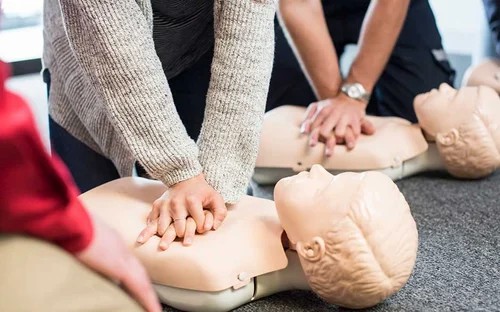Empower Your Workforce: The Ultimate Guide to First Aid and CPR Training
In today's fast-paced work environment, the importance of equipping employees with First Aid and CPR training cannot be overstated. Emergencies can happen at any moment, and having trained personnel on-site can make a significant difference. This comprehensive guide explores the critical benefits of First Aid and CPR training, its role in enhancing workplace safety, regulatory compliance, and emergency preparedness.
The Importance of First Aid and CPR Training in the Workplace
First Aid and CPR training is essential for businesses aiming to create a safe workplace. By providing employees with the knowledge and skills to respond effectively during emergencies, employers not only foster a culture of safety but also ensure that everyone is prepared to handle critical situations.
- Enhances Employee Preparedness: Trained employees are more likely to respond swiftly and effectively during a medical emergency.
- Reduces Workplace Injuries: Regular training can contribute to a decrease in incidents, as employees learn to identify potential hazards and preventative measures.
- Builds Confidence: Knowing how to handle emergencies empowers employees, leading to a more secure and composed work environment.
The Value of First Aid Certification
Completing a First Aid course often culminates in obtaining a certification. This credential not only validates the skills acquired but also plays a vital role in maintaining health and safety standards in the workplace.
- Legal Compliance: Many industries are required to meet specific workplace health and safety regulations, which include having trained personnel available. Ensuring compliance helps avoid potential fines and legal issues.
- Enhanced Reputation: Companies that prioritize First Aid training demonstrate a commitment to employee welfare, improving their image and attracting potential talent.
- Increased Employee Morale: Investing in employee training leads to a happier workforce, fostering loyalty and reducing turnover rates.
Understanding CPR Techniques
Cardiopulmonary Resuscitation (CPR) is a critical skill that every employee should master. Here are the key CPR techniques that training courses typically cover:
1. Basic CPR Steps
Knowing how to perform CPR can save lives. The steps include:
- Check the scene for safety and assess the victim.
- Call for emergency medical services and ensure someone is doing so while you assist.
- Begin compressions at a rate of 100 to 120 compressions per minute.
- Give rescue breaths if trained to do so, ensuring the airway is clear.
- Continue until help arrives or the person shows signs of recovery.
2. Hands-Only CPR
Hands-only CPR is recommended for untrained bystanders. It focuses solely on chest compressions, which are vital in maintaining blood flow until professional help arrives.
Navigating Workplace Health and Safety Regulations
Compliance with health and safety regulations is not just a legal requirement—it's a moral obligation. Employers must adhere to regulations that mandate First Aid training and certification based on workplace needs. Understanding these requirements helps businesses:
- Assess Risks: Identify potential emergency scenarios specific to your industry.
- Implement Training Programs: Establish regular training sessions for employees on emergency procedures.
- Evaluate Training Effectiveness: Conduct drills and feedback sessions to ensure that knowledge is retained and skills are sharp.
Emergency First Aid Procedures
Quick response to emergencies is crucial. Here are essential emergency first aid procedures every employee should know:
- Control bleeding: Apply direct pressure and raise the injury above the heart level.
- Treat burns: Cool the burn with running water and cover it with a clean, non-stick dressing.
- Manage choking: Use the Heimlich maneuver to dislodge obstructions in a choking victim.
Selecting the Ideal First Aid Training for Your Workplace
When choosing a First Aid training program, consider the following:
- Course Accreditation: Ensure the training provider is recognized and follows established standards.
- Relevant Content: The training should cover the specific risks associated with your workplace.
- Delivery Method: Choose between in-person sessions for hands-on practice or online courses for flexibility.
Comparing Online and In-Person First Aid Training Options
The modern workplace often necessitates flexibility. Here’s how online and in-person training compare:
Online First Aid Courses
- Flexible scheduling, allowing employees to learn at their own pace.
- Cost-effective, particularly for larger teams.
- Access to a wealth of resources and information.
In-Person First Aid Training
- Interactive learning environment ideal for hands-on skills.
- Immediate feedback from instructors.
- Team-building opportunities through group sessions.
Conclusion & Call to Action
Investing in First Aid and CPR training for your workforce is not just a strategic business decision; it’s essential for creating a safer workplace. The benefits of employee preparedness, compliance, and a constructive workplace culture far outweigh the costs. Take the proactive step today and ensure your business is equipped to handle any emergency.
Ready to enhance your workplace safety? Enroll in our First Aid & CPR training course now or contact us at [email protected] for more information.



 349,500 Offered Certificates
349,500 Offered Certificates
 24/7 Online Training
24/7 Online Training
 Money Back Guarantee
Money Back Guarantee
 Fully Accredited Courses
Fully Accredited Courses
